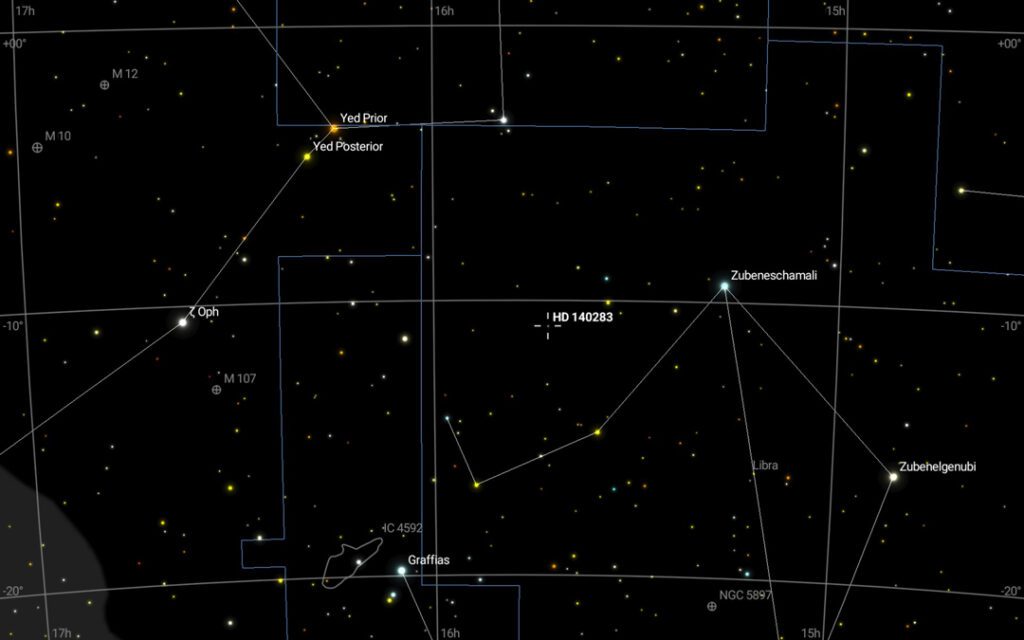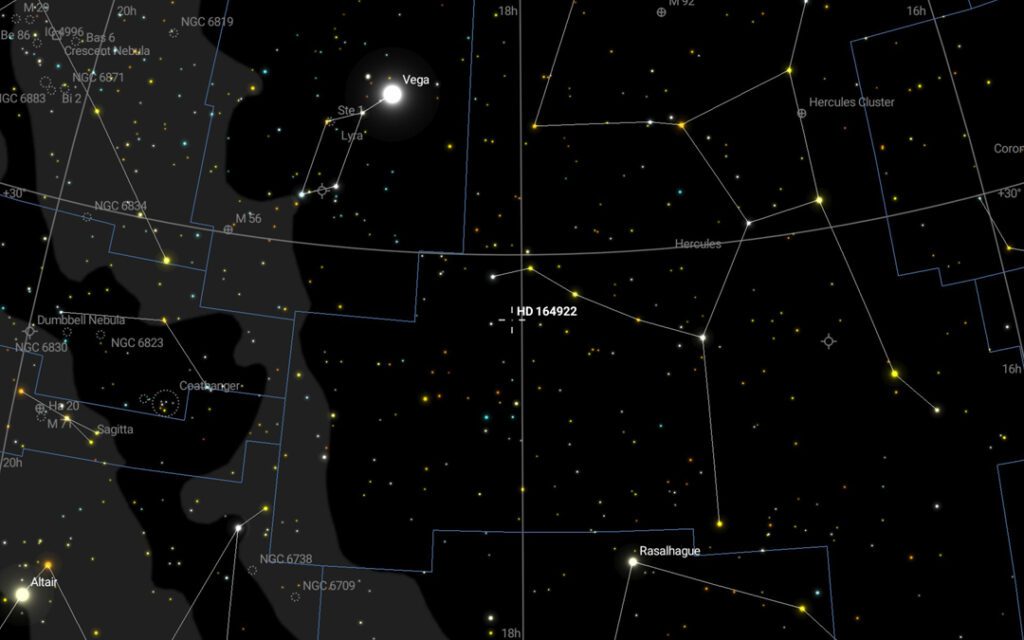I have the book Searching for the Oldest Stars: Ancient Relics from the Early Universe written by professional astronomer Anna Frebel checked out from the library, and wondered if it might be possible to view an ancient star with binoculars from my yard. To my surprise and pleasure a quick internet search revealed that one of the oldest known stars can be easily seen with binoculars from suburban locations — HD 140283, “The Methuselah Star,” is a 7th magnitude star in the constellation Libra. It is 13.7 billion years old, formed only 200,000 years after the Big Bang. For good measure, I selected a second oldster from the same Wikipedia List of oldest stars, HD 164922, a 6.98 magnitude star in the constellation Hercules that is estimated to be 13.6 billion years old. The above image of the Methuselah Star was made with the Hubble Space Telescope in the Digitized Sky Survey and is available through Wikimedia Commons.

Here is a Sky Safari chart showing the position of HD 14283 in Libra. I observed it Friday evening, July 21, 2023 from the sidewalk across from my driveway (where I have a better view to the south). It was easily seen with an Oberwerk 15×70 Ultra binocular, the bright trio of 37 Libra, IU Libra, and HR 5816 (STF 1962) providing a handy navigation aid. HD 140283 is the middle star in a shallow arc of three stars with HD 140458 to the northeast and HD 140069 to the southwest. The star is bright white. In a sparse field. It was remarkable to view it knowing it is nearly as old as the universe.
STF 1962
15h38m -08*47′
6.44/6.49 sep 11.7″ pa 189
This is an excellent double star for 15x binoculars, evenly matched bright white stars nestled together. It’s a fine star field bonus when visiting the Methuselah Star. 😉

And here is a Sky Safari chart showing the position of HD 164922 in Hercules, which I viewed after moving back to my driveway, and the welcome relief from glaring security lights provided by a rollout light shield. HD 164922 is adjacent to 100 Herculis, one of my favorite double stars. (For details about it see the blog post Close Double Stars for 10x Binoculars.)
Here is a more detailed Sky Safari chart. The field ring indicates the 4.2 degree view provided by the 15×70 Ultra, and the limiting magnitude in the chart is based on a faint star visible in the field (HD 335554, 10.06 magnitude) from my driveway Friday evening with the 15×70.

The 13.6 billion year old HD 164922 is a warm white star at the southern end of a graceful arc of four stars. The northernmost star in the arc forms a pleasing binocular pair with a faint companion, not cataloged as a double star. I have glanced at HD 164922 dozens of times when observing 100 Herculis, passing it by with no awareness of its true significance. Now I view it with appreciation and wonder.
Another good book about ancient stars (which I also found at the library 😉) is First Light: Switching on Stars at the Dawn of Time by Emma Chapman. Here are YouTube videos of the authors discussing their books and the science of ancient stars:

